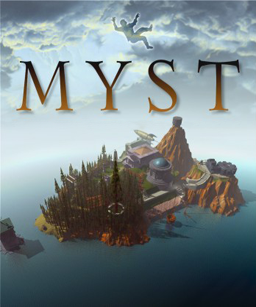
Myst is an adventure video game designed by Rand and Robyn Miller. It was developed by Cyan, Inc., published by Broderbund, and first released in 1993 for the Macintosh. In the game, the player travels via a special book to a mysterious island called Myst. The player interacts with objects and traverses the environment by clicking on pre-rendered imagery. Solving puzzles allows the player to travel to other worlds ("Ages"), which reveal the backstory of the game's characters and help the player make the choice of whom to aid.

Riven: The Sequel to Myst is a puzzle adventure video game, the second in the Myst series of games. Developed by Cyan Worlds, it was initially published by Red Orb Entertainment, a division of Broderbund. Riven was distributed on five compact discs and released for Mac and Windows personal computers on October 31, 1997, in North America; it was later released on a single DVD-ROM in 1998. Riven was also ported to several other platforms. The story of Riven is set after the events of Myst. Having been rescued from the efforts of his sons, Atrus enlists the help of the player character to free his wife from his power-hungry father, Gehn. Riven takes place almost entirely on the Age of Riven, a world slowly falling apart due to Gehn's destructive rule.

Uru: Ages Beyond Myst is an adventure video game developed by Cyan Worlds and published by Ubisoft. Released in 2003, the title is the fourth game in the Myst canon. Departing from previous games of the franchise, Uru takes place in the modern era and allows players to customize their onscreen avatars. Players use their avatars to explore the abandoned city of an ancient race known as the D'ni, uncover story clues and solve puzzles.

Cyan, Inc., also known as Cyan Worlds, Inc., is an American video game developer and publisher based in Mead, Washington. Founded as Cyan Productions by brothers Rand and Robyn Miller in 1987, the company created the Myst series.

Myst III: Exile is the third title in the Myst series of graphic adventure puzzle video games. While the preceding games in the series, Myst and Riven, were produced by Cyan Worlds and published by Brøderbund, Exile was developed by Presto Studios and published by Ubi Soft. The game was released on four compact discs for both Mac OS and Microsoft Windows on May 8, 2001; versions for the Xbox and PlayStation 2 were released in late 2002. A single-disc DVD version was later released for Windows and Mac OS.

Myst IV: Revelation is a 2004 adventure video game, the fourth installment in the Myst series, developed and published by Ubisoft. Like Myst III: Exile, Revelation combines pre-rendered graphics with digital video, but also features real-time 3D effects for added realism. The plot of Revelation follows up on plot details from the original Myst. The player is summoned by Atrus, a man who creates links to other worlds known as Ages by writing special linking books. Almost twenty years earlier, Atrus' two sons nearly destroyed all of his books and were imprisoned; Atrus now wishes to see if his sons' imprisonment has reformed them. The player travels to each brother's prison, in an attempt to recover Atrus' daughter Yeesha from the brothers' plot.

Rand Miller is a C.E.O. and co-founder of Cyan Worlds. He and his brother Robyn Miller became famous due to the success of their computer game Myst, which remained the all-time best-selling computer game from its release in 1993 until that record was surpassed by The Sims nearly a decade later. Rand also worked on the game's sequel, Riven, and later reprised his role as protagonist Atrus in Myst III: Exile; realMyst; Uru; Myst IV: Revelation; and Myst V: End of Ages. He also co-authored Myst novels The Book of Atrus, The Book of Ti'ana, and The Book of D'ni.
Myst is a franchise centered on a series of adventure video games. The first game in the series, Myst, was released in 1993 by brothers Rand and Robyn Miller and their video game company Cyan, Inc. The first sequel to Myst, Riven, was released in 1997 and was followed by three more direct sequels: Myst III: Exile in 2001, Myst IV: Revelation in 2004, and Myst V: End of Ages in 2005. A spinoff featuring a multiplayer component, Uru: Ages Beyond Myst, was released in 2003 and followed by two expansion packs.

Myst V: End of Ages is a 2005 adventure video game, the fifth installment in the Myst series. The game was developed by Cyan Worlds, published by Ubisoft, and released for Macintosh and Windows PC platforms in September 2005. As in previous games in the series, End of Ages's gameplay consists of navigating worlds known as "Ages" via the use of special books and items which act as portals.
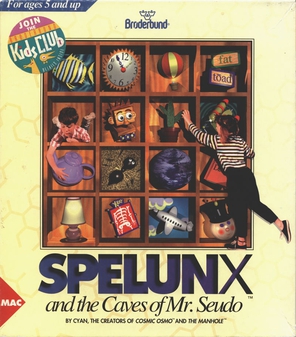
Spelunx and the Caves of Mr. Seudo is an educational computer game intended for young children developed by Cyan in 1991.

Robyn Charles Miller is the co-founder of Cyan Worlds with brother Rand Miller. He served as co-designer of the popular computer game Myst, which held the title of best-selling computer game from its release in 1993 until the release of The Sims seven years later. He also co-directed and co-lead designed the sequel to Myst, Riven, which was the best-selling computer game of its year of release, 1997. Miller composed and performed the soundtracks to both games. He also acted in Myst, portraying one of the antagonists, Sirrus. He co-wrote the first Myst novel, The Book of Atrus.

Cosmic Osmo and the Worlds Beyond the Mackerel is a graphic adventure computer game for the Macintosh computer line created by Cyan, Inc. It was published in 1989 and won the 1990 Mac User's Editors' Choice Award for the "Best Recreational Program" category.
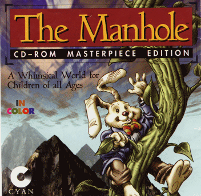
The Manhole is an adventure video game in which the player opens a manhole and reveals a gigantic beanstalk, leading to fantastic worlds.
Richard Vander Wende is an American visual designer and video game designer best known for his work on the 1992 Disney film Aladdin and the Cyan Worlds computer game Riven.
David Wingrove is a British science fiction writer. He is well known as the author of the Chung Kuo novels. He is also the co-author of the three Myst novels.
Tim Larkin is a composer and sound designer for Valve, and previously the audio director for Cyan, best known for the Myst series of computer games. In Cyan, he worked as a sound designer for Riven, and as a composer for realMyst, Uru: Ages Beyond Myst and Myst V: End of Ages.
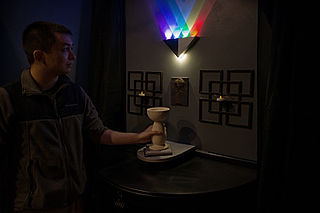
An escape room video game, also known as escape the room, room escape, or escape game, is a subgenre of point-and-click adventure game which requires a player to escape from imprisonment by exploiting their surroundings. The room usually consists of a locked door, objects to manipulate, and hidden clues or secret compartments. The player must use the objects to interact with other items in the room to reveal a way to escape. Escape the room games were born out of freeware browser games created in Adobe Flash, but have since become most popular as mobile games for iOS and Android. Some examples include Crimson Room, Viridian Room, MOTAS, and Droom. The popularity of these online games has led to the development of real-life escape rooms all around the world.
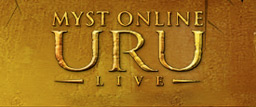
Myst Online: Uru Live is an open source massively multiplayer online adventure game developed by Cyan Worlds. The game is the multiplayer component to the 2003 video game Uru: Ages Beyond Myst. Like Uru, Myst Online takes place in 2000s New Mexico, where an ancient civilization known as the D'ni once thrived. The D'ni had the ability to create portals to other worlds or Ages by writing descriptive books of the Age. Players uncover clues and solve puzzles together; plot developments were added via episodic content updates.

The Myst Reader is a collection of three novels based on the Myst series of adventure games. The collection was published in September 2004 and combines three works previously published separately: The Book of Atrus (1995), The Book of Ti'ana (1996), and The Book of D'ni (1997). The novels were each written by British science-fiction writer David Wingrove with assistance from Myst's creators, Rand and Robyn Miller.
Obduction is an adventure video game developed by Cyan Worlds. Obduction is considered a spiritual successor to Cyan's previous adventure games, Myst and Riven. In the game, the player finds their character transported to strange alien worlds but with human elements within the settings. The player must explore and solve puzzles to figure out how to return home.

















